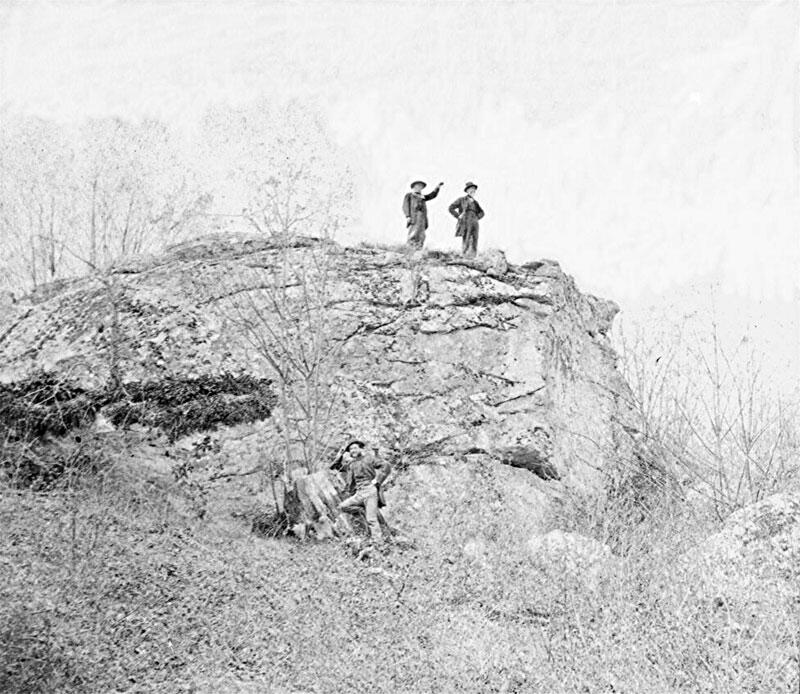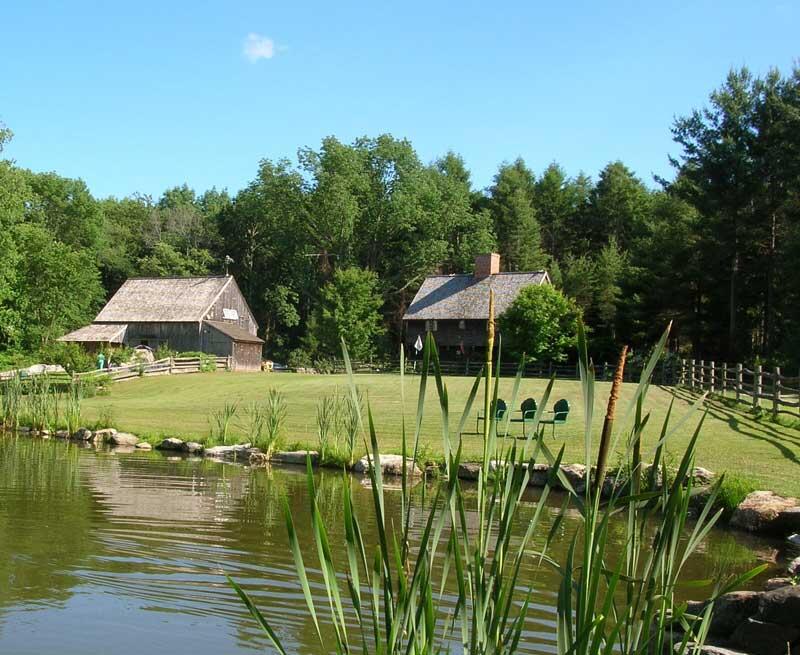by Hans DePold, town historian
(Published in Bolton Horizons, April 2010)
Private Bolton Artifacts Back in Bolton Hands
In 1995 I located all the sites of the Connecticut Rochambeau encampments, and had created scaled French map transparencies as overlays for the DEP topographical maps of each Connecticut site. I gave Mark Sutcliffe, the State Historic Preservation Commission (SHPO), and others copies of the overlays and Mark joined me when I went to some of the sites. Mark asked if he could look for artifacts on his own and give them to the towns for display when he was done with them. The Bolton Town Historian at that time was Larry Larned and he and I both thought it was a good idea to find and preserve any artifacts as long as the owners like Richard Rose agreed. Mark Sutcliffe was later asked by SHPO to supervise the use of metal detectors on the Rose Farm to gather the artifacts found there in 1998. Thirteen of the 60 Rose Farm artifacts were already in Mark's private collection by then. We have never seen the other artifacts. We had Mark's collection on display in Bolton for the 2006 celebration of the 225th anniversary of the French encampment #5 in Bolton.
Mark died about a year later and his collections suddenly went missing. Just this past month Mark's mother, Carol, called and said they located Mark's Bolton artifacts on exhibit in Lebanon. She said that Mark had written that he wished them to be given to Bolton. We now possess 13 of the 60 artifacts found so far at Bolton Heritage Farm, thanks to Mark and Carol Sutcliffe.
In addition, Len Matyia gave us a cannon ball he found hidden against the stone chimney in the White Tavern when he restored it. I loaned it to Mark Sutcliffe and he examined it and said its size and weight were consistent with what the French had at their artillery site uphill from the White Tavern (what is now Bayberry Road). So we now have in our possession 14 of the possible 61 Revolutionary War artifacts found so far in Bolton.
Black Sal's Cave
I just came across a 1950 historical publication that said Sally Arron's first husband froze to death returning home to the cave one night circa 1826. The publication also reported that the roof of the cave collapsed shortly before 1950. The cave was therefore once lower, deeper and much more suitable for living than it is today. The 1830 census said she was living there with her three children.
Dow's Rock
Dr. Charles Fletcher Sumner MD was born in 1817 and lived in Bolton where he devoted 20 years to the school board. I have just discovered in the "Political Graveyard" (https://politicalgraveyard.com/parties/D/1864/CT.html) that he was one of the 12 Connecticut delegates to the Democratic National Convention during the Civil War in 1864. In some of his possessions that were given recently to Bolton I discovered a stereoview labeled "Dow's Rock." Stereoviews were a fine 19th century 3-D photographic technique that required two cameras. The two resulting pictures were put in a viewer and you saw the view in 3-D. Dow's Rock was apparently the largest boulder on the 1805 Methodist camp meeting grounds in Bolton. Please contact me if you know where Dow's Rock rests.
Mark Sutcliffe came on the first Bolton Land Trust hike, in 2004, to the 1805 Bolton Camp Meeting site. He spent much of his life trying to locate the site and said he believed we had found the site. It was large enough to hold 6,000 to 9,000 people camping for four days. Now let's find Reverend Lorenzo Dow's boulder. (See photo below.) I have looked at satellite pictures and there are two long shadows that look very promising.

Tour the Oldest House in Bolton (1670) on June 5, 2010, from 8:45 to 10:00 a.m.
The Hill House was saved and moved from East Hartford to 285 Bolton Center Road in Bolton by historic home restorers Len and Betty Matyia. They also restored the White Tavern located next door. William Hill was one of the original settlers who walked with Thomas Hooker through Bolton Notch on "Ye Olde Connecticut Path" to settle Hartford in 1636. He built this house near the Connecticut River as the colony spread into what is now East Hartford. In 1675 he was wounded in its doorway when the deadly King Philip's War broke out. The Bolton grounds form a colonial setting, with a post and beam barn, a pond, and a sweep well. It is on the Washington Rochambeau Revolutionary Route National Historic Trail. Bolton school children are especially welcome to tour the house. Last year the 7th grade history class bus route passed the Hill House but they did not have time to get out and explore. The recently recovered Bolton artifacts from Bolton Heritage Farm will be on display, plus a French knee-buster cannon ball that Len Matyia found hidden against the chimney of the White Tavern. The Matyias will lead the house tours.
